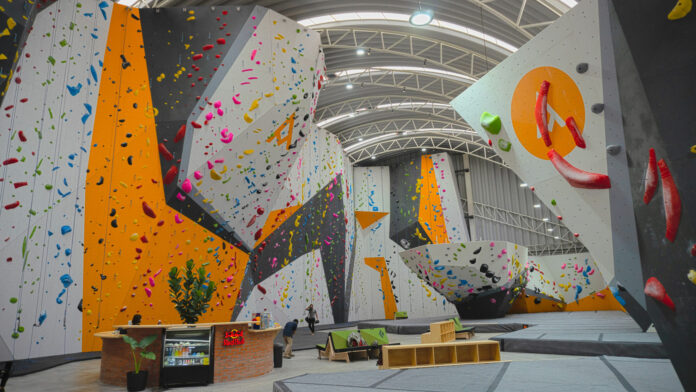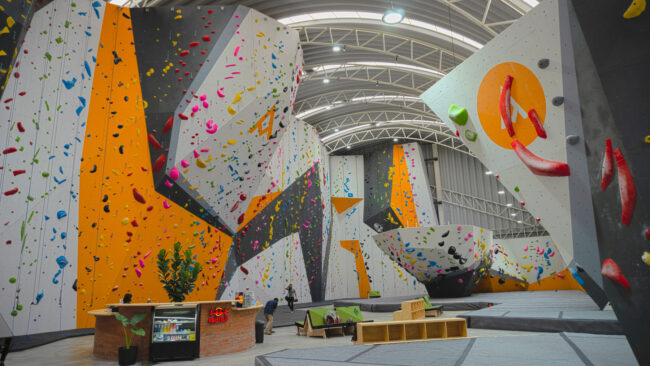
[Editor’s Note: This is a companion piece to our annual Gyms and Trends report. The full 2022 report on climbing gym development in North America can be read here.]
When Mexico-based Adamanta opened two new climbing gyms last year, CEO Jose Saucedo viewed the brand’s progress and development similarly to how one might view organic processes of the natural world. “I believe the climbing community mimics, in certain ways, bacteria cultures,” Saucedo explains to CBJ. “In the right conditions, the culture will expand and thrive. However, not even perfect conditions can accelerate the growth of a bacteria culture beyond its natural pace.”
That might sound like a peculiar comparison, but gym climbing has indeed been expanding and thriving in Mexico for the past decade—and amid that veritable boom, Adamanta has been one of the leaders of the country’s climbing gym industry. Those two new Adamanta locations in 2022—in Puebla and Satélite—doubled Adamanta’s total expanse (with preexisting gyms in Santa Fé and Escandón). The two new gyms also made Adamanta officially the largest climbing gym operator in all of Mexico—and, Saucedo notes, possibly the largest climbing gym operator in Latin America.
But just as significant as the number of climbing gyms in Mexico (29 that we know of) are the types of climbing gyms that are opening around the country with greater frequency. Adamanta’s Puebla location, for example, is a bouldering-focused facility that features nearly 10,000 square feet of climbable surface from Walltopia (in fact, every Adamanta location features walls built by Walltopia), all beneath an innovative, geometric dome-like roof. This dome style is called arcotecho in Spanish; it does not provide insulation, but the unique, spacious shape makes it particularly cost-efficient and good at proliferating ceiling light. For this reason, arcotecho roofs are popular for industrial cities in central Mexico and particularly Mexico City, where temperatures are almost always in the 70s, Saucedo says.
Aside from the noteworthy roof, an assortment of hangboards, weightlifting equipment, snacks, as well as a stretching area are all part of Adamanta Puebla’s amenities package, and the other Adamanta locations have comparable offerings too.
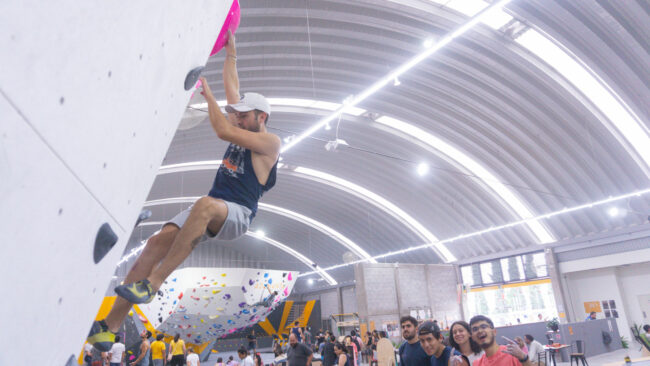
Saucedo points out that Adamanta cannot take credit for being the first-ever Mexican brand to boast a “modern-style” climbing gym, but it was certainly among the first companies to develop and multiply the concept. And this is also significant, as Saucedo says, that such “modern-style” gyms—which have been staples in other parts of North America for at least a decade—are a much newer concept in Mexico.
“The number of individuals involved in [climbing] is experiencing similar growth rates to those seen in other developed countries, such as the USA, but with a decade’s delay—maybe even a decade and a half,” Saucedo expounds. “Interestingly enough, this has been the case not only with sports but with many other trends. In Mexico, we are used to seeing a delayed adoption of behaviors that started in first-world economies, yet slowly but surely trickled down south later on.”
A History of Vertical Adventure
It might have taken a while for the concept of “modern-style” climbing gyms to proliferate in Mexico, but Mexico has always possessed a rich climbing heritage. In fact, the history of recreational climbing in Mexico and the history of climbing elsewhere in North America share a lot of parallels, according to Saucedo—particularly with mountaineers and alpinists seeking out new cliffs in parts of the country that could offer new physical challenges, much like in the United States and Canada. But Mexico’s climbing history is unique in that many of the earliest recreational climbing was done not on mountains, per se, but on the rocky sides of volcanoes.
Then, around the 1970s, climbers in Mexico started venturing beyond the volcanoes in greater numbers and, as Saucedo frames it, “the first generation of rock climbers was born.” The result, as climbers spread out across the country with a fervent passion for discovering new climbable terrain, was the development of two main trad-climbing areas in central Mexico—Aculco and La Coconetla.
The first climbing gyms in Mexico were also born out of this growth in outdoor climbing. “Naturally, in the search for pushing their limits, the climbers resorted to training, so they built the first climbing gyms in Mexico,” Saucedo says.
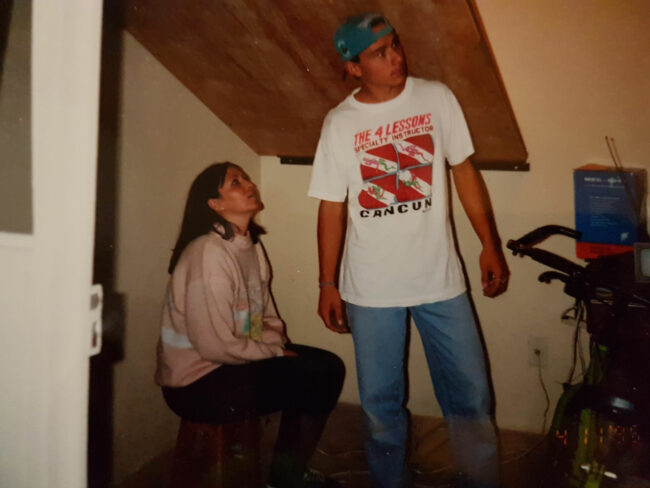
Javier Serratos, who founded Toka in Mexico City with his wife, Quetzali Galindo, points out that many of these early climbing gyms were not formal facilities; often they were homemade communal setups in houses, backyards and garages primarily in Mexico’s main cities, such as Mexico City, Guadalajara and Monterrey. (Aqua Gym in Guadalajara was a prime example of Mexico’s nascent climbing gym scene: It was a popular spot, and one that helped foster an indoor climbing community, but it was essentially a climbing wall inside a fitness gym.)
Ambitious climbers occasionally cemented handholds and footholds onto bridges and overpasses around Mexico City as well to get their climbing fix. But the informal, “underground” nature of recreational climbing steadily changed, particularly with the unveiling of Escalódromo Carlos Carsolio, a 1,600-square-foot conglomeration of outdoor walls that opened in 1997. (The facility was started by Fernando Posadas; the name is in reference to Carlos Carsolio, among the most famous mountaineers in Latin America, according to the linked article).
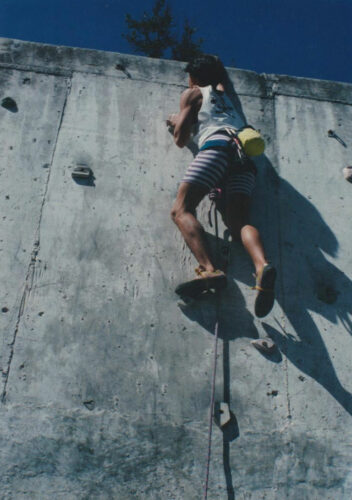
By the time Escalódromo Carlos Carsolio permanently closed nearly two decades later, a more formal gym climbing scene in Mexico had blossomed, with landmark gyms such as the bouldering-focused Onix, Levita and Bloc E eventually becoming pillars for the respective climbing communities of Mexico City and elsewhere. Serratos’ Toka gym also joined the fray; in fact, Serratos had worked at Escalódromo Carlos Carsolio years before founding Toka. Trepa, Punto Muerto and Motion Boulder eventually helped bolster the climbing scene in Guadalajara.
A Bright Future
Like everywhere else in the world, the COVID-19 pandemic ravaged Mexico and pummeled its gym industry in the process. Serratos recalls his Toka gym having to close for seven months in 2020; a cautious and gradual reopening followed, but even in 2022, Toka was still “learning to live with the ravages of the pandemic,” Serratos tells CBJ.
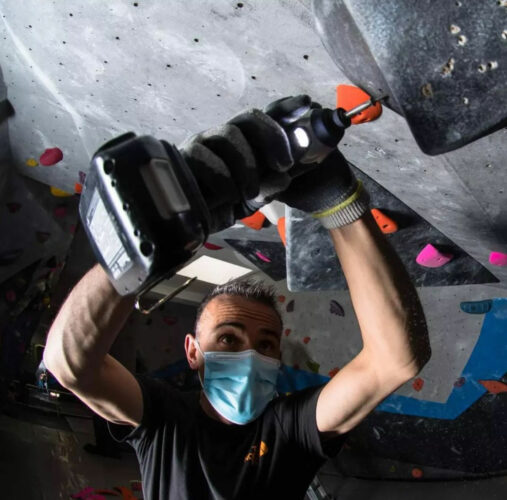
Yet, in those struggles have come some bright spots. For example, in April 2022, Toka went through a massive renovation and nearly doubled in size—expanding from more than 3,000 square feet to more than 6,000 square feet; the gym’s retail area was enlarged, as were the reception area and locker rooms. A cafe and a “multi-purpose” room were added for yoga, dance, and functional fitness classes…epitomizing the aforementioned “modern-style” wave that is now upon the Mexican climbing gym industry. This all served as a precursor to Toka’s 11-year anniversary celebration on November 11, 2022.
“A decade ago, the climbing community [in Mexico] was much smaller, where almost everyone knew each other; there were very few specialized shops and just a few climbing gyms throughout the country. But in recent years that has changed a lot,” Serratos reflects, pointing out that gyms and recreational walls are no longer limited to the country’s main cities: “Today it is possible to find climbing walls and climbing areas in practically the entire country.”
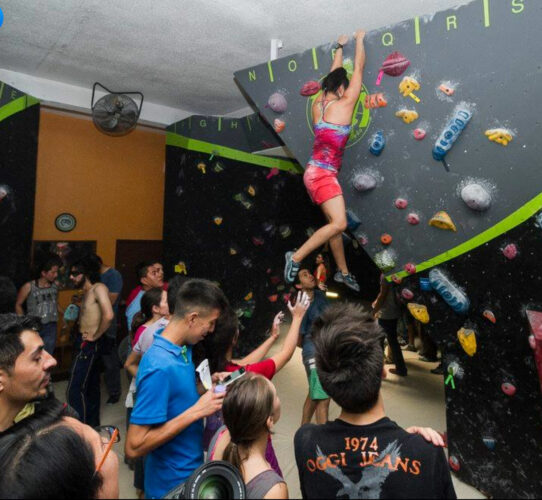
Jonathan Alan González Ruiz, General Producer at the aforementioned Motion Boulder in Guadalajara, reflects on 2022 being a good year. “The pandemic impacted us, but the government of Jalisco—the state where Guadalajara is located—was more laid back, in terms of the restrictions for the climbing gyms.” He adds that one of the biggest challenges facing his gym (and others) amid climbing’s increased popularity is “the creation of good professionals in the industry,” noting that organizing a “climbing school” or any such educational programming is complicated. “Overall, the biggest challenge is that there are few options for becoming a professional [in the climbing gym industry] with actual diplomas; it’s hard to find actual courses and workshops in the country, so what we have done is bring in people—like routesetters and coaches—from other countries for this,” he explains.
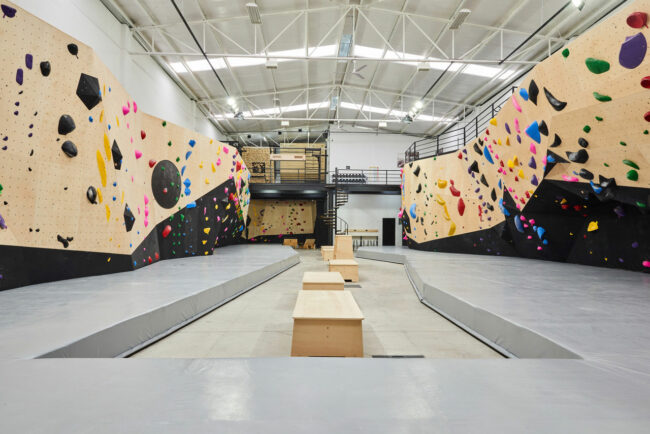
Saucedo at Adamanta embraces the change and growth in Mexico’s climbing gym scene, as long as the climbing community remains at the heart of the industry’s evolution—and the evolution of his own company. “Our community is the backbone of our growth philosophy,” he tells CBJ. “Whenever we are faced with the decision to open a new gym, we have to assess whether there’s potential to build and nurture a community as healthy as the one we currently have. We have to be convinced that we will be able to connect with the local crowd at each facility.”

John Burgman is the author of High Drama, a book that chronicles the history of American competition climbing. He is a Fulbright journalism grant recipient and a former magazine editor. He holds a master’s degree from New York University and bachelor’s degree from Miami University. In addition to writing, he coaches a youth bouldering team. Follow him on Twitter @John_Burgman and Instagram @jbclimbs. Read our interview Meet John Burgman, U.S. Comp Climbing’s Top Journalist.




